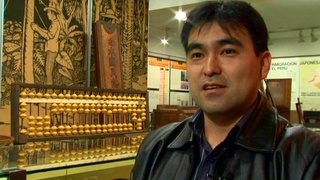Interviews
The Birth of Kinnara
I think probably everybody has a different version. I just remember we were putting away the drum. Every year, only one drum was here at the temple, and that was the one that was used for obon. Inoue Sensei, one the nihon-gakko senseis here, played that taiko for the ondo—for the pacing or beat for the dancers. He had a very distinct style.
This is right about the birth… When Mas is here—and he’s beginning to talk about studying chanting and Buddhist music and things like that—some of us began to take an interest in that type of Taiko, that type of drumming for the dancers. So some of us were beginning to learn how Inoue Sensei was playing these rhythms. But we were putting away the drum, and we just started kind of jamming on it. I think we played for a couple of hours. I don’t think it was all night or anything like that. I do remember my hands getting bloody, blisters breaking and just feeling tremendous—this energized kind of feeling from playing that drum. I think that was the birth for us.
Date: December 10, 2004
Location: California, US
Interviewer: Art Hansen, Sojin Kim
Contributed by: Watase Media Arts Center, Japanese American National Museum








